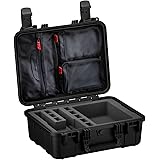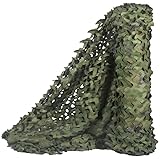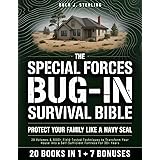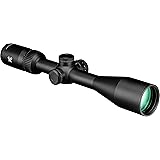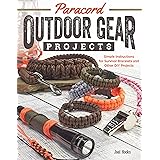Have you ever watched a spy movie and wondered if those daring escapes and quick-thinking survival tactics could ever work in real life? The video above offers a fascinating glimpse into the world of emergency preparedness, sharing invaluable survival tips from a former secret agent. While cinematic portrayals often exaggerate, the core principles of resilience and readiness are incredibly real. This post dives deeper into these critical situation survival skills, expanding on the expert advice to help you feel more empowered and prepared for unexpected challenges.
Mastering Critical Situations: Essential Survival Tips from a Former Secret Agent
Navigating the Chaos: Car Crash Survival Strategies
Car crashes are, unfortunately, a grim reality. The video highlights a sobering statistic: over 40,000 lives were claimed in car accidents in 2016 alone, underscoring the vital importance of knowing how to react. While safety features in modern vehicles have significantly improved, personal preparedness remains paramount. The way you position your hands and body can dramatically reduce your risk of injury during a collision, transforming a potentially devastating impact into a more survivable event.
When driving, the standard advice for hand placement used to be 10 and 2 o’clock, but this has been updated to the 9 and 3 o’clock position. This shift is crucial because it keeps your arms out of the airbag’s deployment path, preventing severe arm or hand injuries. Furthermore, keeping your thumbs on the outer edge of the steering wheel, rather than tucked inside, minimizes the chance of finger fractures if the airbag deploys with force. Crossing your arms is especially dangerous, as it can lead to multiple fractures if an accident occurs, essentially turning your own limbs into a mechanism for self-harm.
For backseat passengers, specific actions can also significantly enhance safety. Should a collision occur, quickly placing your hands on the back of your head and pressing your forehead against the seat in front of you creates a protective shield for your head and neck. Simultaneously, bending your knees at a 90-degree angle helps to brace your body against the forward momentum, distributing impact forces more effectively. This fetal-like position can dramatically reduce the likelihood of head, neck, and spinal injuries, turning a split-second decision into a potential lifesaver.
Defending Against Aggression: Dog Attack Survival
Encounters with aggressive dogs can be terrifying, but preparedness can make all the difference. While many people panic and run, often escalating the situation, a few simple tools and tactics can de-escalate or deter an attack. The video suggests a mixture of water and ammonia as an effective, harmless deterrent. This mixture acts as a strong sensory overload for a dog without causing any lasting harm, giving you precious moments to escape. Keeping a small spray bottle of this solution, or even plain water, can be a surprisingly effective first line of defense.
Another ingenious solution mentioned is using a can of pressurized air, like those designed for cleaning keyboards. A sharp, cold blast of air directly to the dog’s nose can disorient it, buying you time to retreat. This method works by startling the animal and overwhelming its sensitive olfactory senses, disrupting its aggressive focus. However, if the situation intensifies, more potent deterrents may be necessary. Pepper spray, specifically designed for animal encounters, is a highly effective, non-lethal option that creates a strong burning sensation and temporary blindness, allowing for a safe escape. It’s important to understand your local laws regarding pepper spray usage.
Perhaps the most unconventional yet effective advice is using another animal’s urine, or even your own, to mark territory. Dogs are highly territorial creatures, and the scent of another animal’s urine can signal that the area is already claimed, often causing an aggressive dog to back off rather than engaging in a territorial dispute. This is a psychological deterrent, leveraging a dog’s natural instincts. When facing an aggressive dog, remember to avoid direct eye contact, which can be perceived as a challenge, and try to stand your ground calmly, if possible, before employing any deterrents.
When Seconds Count: Door Breaching and Barricading Techniques
In emergency situations like a fire or an intruder, the ability to quickly open or secure a door can be life-saving. The dramatic, full-body ramming seen in movies is not only ineffective but incredibly dangerous, often resulting in severe injuries to the person attempting it. Instead, real-world door breaching relies on precision, leverage, and force directed at the weakest point: the lock mechanism. Understanding this distinction can be the difference between escaping and being trapped.
To effectively knock down a door, focus your kick with your heel directly on the lock. Plant your other heel firmly on the floor to generate maximum stability and power. The key is to deliver a precise, powerful blow that exploits the door’s structural vulnerabilities, rather than trying to overpower the entire frame. This method works because it concentrates all your force on a single point, allowing you to break the latch or lock even if the door opens outwards. This focused energy is far more effective than a broad, unfocused assault on the door itself.
Conversely, barricading a door properly can give you precious time and protection against intruders. Simple items can be surprisingly effective. Placing rubber door stops around the door’s crevices significantly increases resistance, making it much harder to force open. For added security, wedging a mop or a chair under the door handle creates a formidable barrier. Ensure the mop or chair has a stable base on the floor to prevent it from slipping, amplifying its effectiveness. As seen in movies, stacking heavy objects in front of the door can also create a physical obstacle course, forcing an attacker to contend with multiple layers of defense, slowing their progress and potentially deterring them altogether.
Strategic Protection: Active Shooter and Cover Tactics
The unfortunate prevalence of active shooter incidents makes knowing how to react a critical modern survival skill. Panic is a natural reaction, yet suppressing it to make swift, informed decisions is paramount. The primary objective in such a situation is to find effective cover, which means finding something that will stop bullets, not just hide you. Understanding the difference between ‘cover’ and ‘concealment’ is vital for survival.
The video wisely points out that an armchair or couch, while offering concealment, provides virtually no protection against bullets. In contrast, a solid granite-surface table or even large, heavy flower pots can offer genuine cover. These dense materials can absorb or deflect projectiles, safeguarding you from direct fire. When outside, the engine block of a car is far more protective than the trunk or doors due to its solid metal construction. Trash cans, on the other hand, are merely concealment and should be avoided as primary cover. It’s crucial to remember that everyday items like clipboards or hardcover books, while sometimes portrayed as bulletproof in fiction, offer no protection against gunfire in reality. Always seek out dense, solid objects that can truly act as a shield.
Beyond finding immediate cover, consider the layout of your environment. Move quickly and quietly to the safest location, prioritizing solid structures over flimsy ones. If moving is not an option, dropping to the floor and crawling to the nearest substantial cover can reduce your profile and expose less of your body. Remember, the goal is to get behind something that can absorb kinetic energy, minimizing your exposure to direct fire. Think of it like a game of strategic chess, where your moves are calculated to put the most protective barrier between you and the threat.
De-escalation and Disarming: Surviving at Gunpoint
Being at gunpoint is an incredibly high-stress situation where every decision carries immense weight. The primary goal should always be to survive with minimal harm. Most experts advise compliance and de-escalation as the safest initial approach, as attempting to disarm an attacker is extremely risky and should only be considered as a last resort when your life is unequivocally at stake. The consequences of a failed attempt can be dire, making careful assessment of the situation paramount.
However, if a desperate situation demands bold action, the video outlines a specific disarming tactic: if a gun is pressed against your back and you’re ordered to walk, slowly raise your arms to elevate the gun further against your back. This creates a moment of direct contact and a window of opportunity. Then, in one swift, decisive motion, turn your body, bringing one arm down to trap the gun under your armpit while simultaneously using your other arm to strike the attacker. This maneuver relies on the element of surprise, speed, and precision to control the weapon and incapacitate the assailant.
This tactic is not for the faint of heart and requires significant practice and mental fortitude. It’s a high-stakes gamble where timing and accuracy are everything. The risks involved are immense, and a misstep could have fatal consequences. Therefore, while understanding such a technique is part of comprehensive survival knowledge, it should be approached with extreme caution. The best defense is often situational awareness, avoiding dangerous areas, and de-escalation techniques that prevent a weapon from being drawn in the first place, ensuring you never have to make such a perilous choice.
Bracing for Impact: Explosion Survival Protocols
Explosions, while rare for most, are incredibly dangerous events that require immediate and precise actions to maximize survival. The initial blast wave, followed by flying debris and potential structural collapse, poses multiple threats. Finding refuge quickly and knowing how to shield your body from the powerful forces involved is critical. The type of cover you seek can significantly influence your chances of survival.
The video rightly suggests that natural materials like a brick or wooden fence offer better protection than flimsy structures. These materials can absorb or deflect some of the blast’s energy and shrapnel, acting as a crucial barrier. However, if no solid cover is available, your body positioning becomes your best defense. Lie on the ground with your face down, crossing your legs to protect major arteries in the groin and minimize damage from shrapnel. Opening your mouth equalizes pressure in your inner ear, reducing the risk of eardrum rupture, and covering your ears with your hands protects your auditory organs from the deafening sound wave. This position minimizes your body’s surface area exposed to the blast and safeguards vital organs, sensory systems, and major blood vessels from the initial shockwave and subsequent fragmentation, buying you precious moments to seek more substantial cover or escape.
Breaking Free: Escaping a Car Trunk
The horrifying scenario of being locked in a car trunk, often depicted in thrillers, is a chilling reality for some. Fortunately, modern cars are equipped with safety features designed for such emergencies, and older models offer clever escape routes. Knowing these methods can turn a desperate situation into a successful escape, making a terrifying ordeal manageable.
Most newer model cars, since 2001, are legally required to have an internal emergency trunk release. This is typically a glow-in-the-dark handle or latch that, when pulled, immediately pops open the trunk. It’s designed to be easily found in the dark and operated even under duress. If you find yourself in an older car without this feature, you can often gain access to the trunk’s lock latch mechanism by feeling around the interior lining. These latches, while less obvious, can sometimes be manipulated to open the trunk.
Another viable option in many sedans is to escape through the folding back seat. Many cars have rear seats that fold down, either partially or fully, by pulling a release lever or strap located within the trunk or in the car’s cabin. This can provide a pathway into the main passenger compartment, from which you can potentially escape through a door or window. Lastly, a clever tactic is to kick out one of the taillights from the inside. Once a hole is created, you can extend an arm through it and wave for help. This is a highly visible signal, especially at night, and significantly increases the chances of another driver noticing your distress and alerting authorities. Staying calm and systematically exploring these options can lead to your freedom.
Unshackling Yourself: Escaping Tied Hands and Feet
Being bound can feel utterly helpless, but surprisingly, many common restraints can be overcome with specific techniques. The key is understanding how different materials break under pressure and exploiting their weaknesses. Whether it’s duct tape, rope, or zip ties, a combination of leverage, sudden force, and precise movement can lead to a successful escape, turning a seemingly impossible situation into a display of personal ingenuity.
For feet tied with duct tape, the video describes an effective method: stand up straight, point your toes outwards to create a V-shape with your feet, then jump up. As you land, spread your knees apart quickly and forcefully. This sudden, outward pressure on the tape, combined with the momentum of your landing, often causes it to tear instantly. This works because duct tape, while strong under tension, can fail catastrophically under sudden, sharp shear forces, especially when stretched across a broad surface like the back of your ankles.
Once your legs are free, tackling tied hands requires a similar understanding of force and leverage. If your hands are tied behind your back, your first objective is to maneuver them to the front of your body. This might involve wriggling, contorting your body, or using friction against a surface. Once your hands are in front, press them together as tightly as possible, creating maximum tension on the restraint. Then, with a sudden, powerful outward pull, snap your hands apart. This rapid, explosive movement creates an immense stress on the binding material, often causing it to break, especially if it’s rope or certain types of zip ties. These techniques highlight that even in seemingly impossible situations, an understanding of physics and material science can be your greatest asset.
Against the Current: Water Survival with Restraints
The frightening prospect of being thrown into water with bound limbs adds a terrifying layer to survival scenarios. Panic is the greatest enemy here, as it leads to rapid breathing and exhaustion. The most crucial factor for survival in this extreme situation is maintaining calm and controlling your breathing, conserving energy while you strategize your movements. It’s a mental battle as much as a physical one.
First and foremost, focus on correct breathing: take deep, deliberate breaths in and quick, efficient breaths out. This conserves oxygen and helps you stay afloat. If the water is shallow enough, you can make small, controlled jumps or pushes off the bottom to propel yourself towards the shore. This conserves energy that would otherwise be spent flailing. If you’re in deeper water and need to move while on your belly, keep your back slightly arched to help keep your head above water. Use small, bending movements with your knees, extending them to create subtle propulsion. This minimizes splashing and conserves your energy for sustained movement.
In raging or deeper waters, the video suggests rolling onto your back. This technique is particularly effective as it allows you to get your face out of the water more easily, enabling quick, deep breaths. While on your back, you can use subtle wiggling movements or small leg kicks to slowly propel yourself towards safety. The key is to avoid fighting the water or attempting powerful strokes, which will quickly exhaust you. Instead, you’re working with the water’s natural buoyancy and your own breath control to make incremental progress. These methods, while not effortless, provide a realistic chance of survival when faced with such a dire situation, proving that even when seemingly helpless, there’s always a way forward.
Harnessing Nature: Building a Snow Shelter
Getting caught in a severe snowstorm while hiking, far from any established shelter, can quickly become a life-threatening situation due to the bitter cold. However, with the right knowledge, you can create a surprisingly effective emergency refuge using nature’s own insulation: thick snow and evergreen trees. This skill transforms a dire threat into a manageable challenge, allowing you to weather the storm and prevent hypothermia.
The first step is identifying the ideal location. Look for a thick evergreen tree with low-hanging branches, as these provide a natural canopy and help stabilize the snow around them. The thicker the snow on the ground, the better, as it offers more material for construction and insulation. Dig a hole in the snow right along the tree trunk, aiming for a depth that allows you to comfortably sit or lie down without your head touching the top of the hole. The deeper the hole, the better its insulating properties will be, as it provides more trapped air space, which is crucial for warmth.
Once the hole is dug, pack the snow on the walls of your hideaway as densely as you can. This increases the structural integrity of your shelter and helps to further improve its insulation, preventing cold air from seeping through. For a more comfortable and warmer sleeping area, gather some of the evergreen tree’s branches and lay them on the ground inside your shelter. This creates a natural barrier between you and the freezing snow, adding a layer of insulation and preventing direct heat loss from your body to the ground. While it won’t be a five-star hotel, this improvised shelter can provide vital protection from the elements, significantly increasing your chances of surviving an unexpected snowstorm, showcasing the power of basic wilderness survival skills.
Beyond the Briefcase: Essential Gear for Critical Situations
The intrigue of what a secret agent carries in their kit often sparks curiosity, and for good reason—their gear is meticulously chosen for survival in any situation. While a jetpack might be out of reach for most, the principles behind their essential items can inform our own everyday carry (EDC) for personal safety and emergency preparedness. These are not just gadgets; they are versatile tools designed to solve problems in critical situations, making them truly valuable survival tips.
Among the most popular contents mentioned are a key to handcuffs, highlighting the need for escape tools. A compact, powerful flashlight is indispensable for navigating darkness, signaling for help, or disorienting an attacker. A pen, seemingly innocuous, can be used for writing, as a makeshift tool, or even as a self-defense implement. A reliable compass is vital for navigation, especially if electronic devices fail. A razor blade, often part of a multi-tool, offers cutting capability for various tasks, from opening packages to severing restraints. A pocket knife is universally handy, serving for protection, opening things, or preparing materials. A mouth guard, as the video notes, can protect your teeth during a collision or an altercation, a often-overlooked but crucial piece of protective gear. Finally, lock picks underscore the need to bypass obstacles, representing the ultimate tool for overcoming physical barriers. Each of these items, chosen for their versatility and compact nature, teaches us that preparedness isn’t about having everything, but having the right tools for a multitude of critical situations, enabling effective survival tactics when they matter most.


